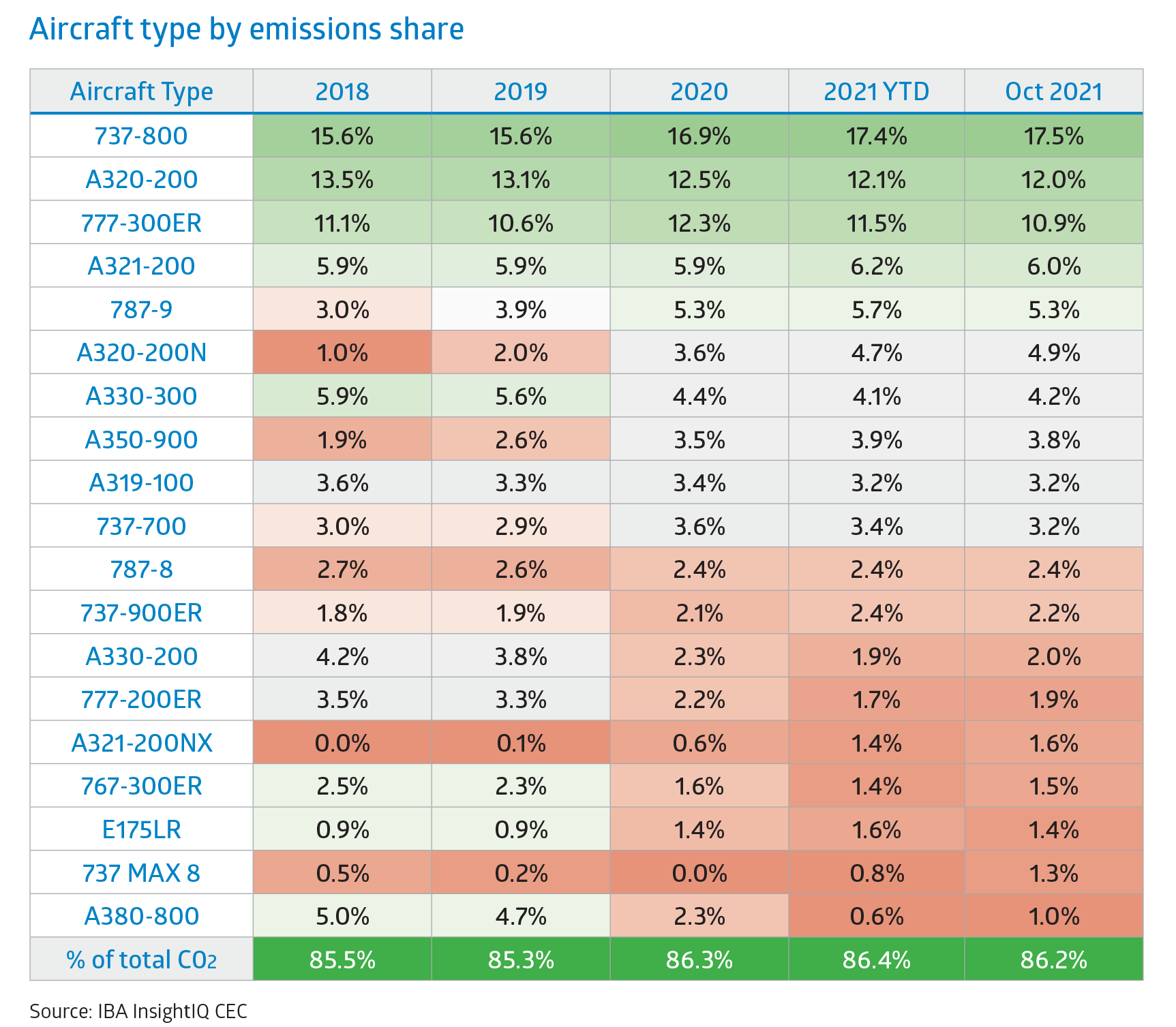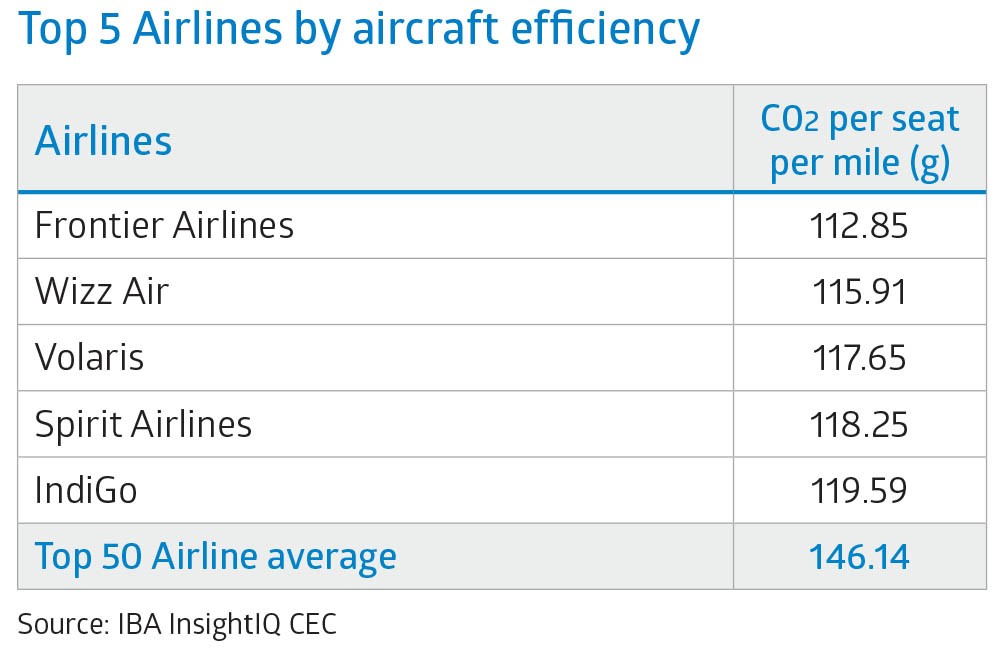08/10/2021
View our Carbon Index Spotlight data for October 2021
The IBA aviation Carbon Emissions Index shows an overall year on year reduction of 5.2% on a rolling three-month basis since 2018. The efficiency improvements have been fairly linear over the last four years, apart from a spike at the start of the pandemic (Q2 2020) when Middle Eastern airlines, predominantly flying Boeing 777-300ERs, remained flying while many other carriers suspended operations.
Data from our Carbon Index shows that the active A380 fleet dropped 80% from 2018 to September 2021. Many operators placed their A380s in long term storage and IBA predict that many will not re-enter service, with the only airline still operating significant numbers of the type being Emirates.
The Boeing 777-200ER and 767-300ER have seen a significant spike in retirements and long-term storage. 60% of the global 777-200ER fleet are now parked, stored or retired, and the 767-300ER has experienced a 72% increase in parked, retired or stored inventory levels. However, unlike the 777-200ER the 767-300ER has a healthier freighter conversion program, and IBA forecasts that a good percentage will return to service with operators such as Amazon Air.
The Boeing 787-9 has seen a marked jump in market and overall CO2 emissions share, partly due to a 40% increase in fleet size, but also because a large portion of the fleet has remained active throughout the pandemic. This has filled the void left by legacy aircraft such as the 777-200ER and 767-300ER routes, which no longer require the same levels of capacity. This delivers a significant reduction in CO2 per trip and per seat mile, giving airlines some respite in costs.
The A320-200neo has one of the largest gains in total CO2 emissions share in the narrowbody fleet, jumping from 1% to 4% of the worldwide fleet between 2018 and September 2021. It is one of the few aircraft to increased its active worldwide fleet in that period, from 484 aircraft, 1,214. Comparatively, the A320-200ceo has seen a 40.1% increase in retirements, with a total reduction of 967 aircraft in active service. IBA still expects large numbers of these aircraft to re-enter active service, but with older A320ceos continuing to exit active service as the NEO increasingly dominates the Airbus narrowbody fleet. The Airbus A320-200neo has on average 15% lower emissions than the CEO, with clear benefits in CO2 reduction.

Leading the way in emissions efficiency for the airlines in 2021 are these five airlines, all operating a low-cost carrier model using predominantly latest generation
aircraft: These carriers are all operating around 20% more efficiently per seat per mile than the top 50 airlines average by total CO2 in 2021. Of the top five airlines listed above, the main emissions reductions per seat per mile have been achieved by the operators favouring the A320neo throughout the pandemic. This should not diminish perceptions of the 737 MAX 8, which possess largely comparable levels of efficiency, but its market share has been significantly hampered by its grounding and lack of deliveries in recent years. As MAX deliveries begin to ramp back up, IBA forecasts expects a much more even share in airline efficiency ratings between the Boeing and Airbus aircraft, with low cost carriers typically favouring one manufacturer to reduce operational complexity.
.png)
These five aircraft leasing firms below have delivered the most efficient fleet operations during 2021, with efficiency levels typically 10% better than the top 50 lessors average. Within the lessor portfolios, the best performing lessors predominantly own newer generation narrowbody aircraft which significantly contribute towards a CO2 per seat per mile reduction. IBA predicts that Jackson Square Aviation will remain within the top lessors group as their portfolio is dominated with new generation asset types, including around 50 A320-200neos in service and over 30 737 MAX 8s on order. In future publications of its Aviation Carbon Emissions Index, IBA will focus on whether more ESG-focussed lessors are opting to sell older generation assets in favour of new technology aircraft to better improve their efficiency ratings, or instead to combine carbon offset packages with leases to compensate.
